Summarize this article via
You need to be the king of social listening. Today is faster than yesterday, and you can’t miss a signal. Sentiment spikes in minutes. TikTok trends can flip brand perceptions overnight. A Reddit thread can predict a crisis before your support team sees the first ticket, and before your team even checks Slack, thousands of people may already be reshaping how your brand is perceived.
According to the Digital 2024 Report by Meltwater and We Are Social, the world now has 5.04 billion social media users, which represents 62.3% of the global population.
On average, global internet users spend 2 hours and 27 minutes per day on social media (Statista). That’s a nonstop stream of opinions, frustrations, hype cycles, fan conversations, product complaints, memes, reviews, and the occasional viral crisis. 😱
And it all moves too quickly for manual monitoring or traditional dashboards to keep up.
At this point, AI social listening steps in. 👉 Instead of simply counting mentions or tracking a handful of keywords, social listening AI uses:
- Machine learning,
- Natural language processing,
- Multimodal models that interpret text, images, and video.
The main goal of using AI for social listening is to grasp what people feel, why sentiment shifts, where a trend begins, and what’s about to become the next headache or opportunity for your brand.
So, if you’ve been trying to figure out what AI social listening really is, how generative AI reshapes social listening, or which AI social listening tools are actually worth the investment, this guide breaks everything down—clearly and practically.
TL;DR
- AI social listening helps brands interpret not just what people say online, but how they feel and why trends shift.
- With 5B+ social media users, manual monitoring can’t keep up with real-time sentiment spikes or fast-moving trends.
- AI tools use machine learning, NLP, multimodal analysis, and LLMs to detect context, emotion, anomalies, and emerging themes.
- Social listening AI works in three layers: data collection, AI-driven analysis, and actionable insights.
- A strong strategy includes clear goals, smart keyword mapping, the right tool (e.g., Sociality.io), and an adaptive monitoring cadence.
- Top tools reviewed include Sociality.io, Talkwalker, Brand24, Digimind, Meltwater, and Sprinklr.
- Future trends: multimodal listening, predictive intelligence, cross-channel storylines, and deeper CRM/CX integration.
What is AI social listening?
Social listening tracks conversations, keywords, brand mentions, competitors, and sentiment across social platforms and the wider web to understand what people say and feel—whether they tag you or not.
AI social listening builds on this by using NLP, machine learning, and sometimes image or video recognition to interpret conversations at scale. Instead of just collecting mentions, it understands context, tone, and emerging patterns.
In simple terms:
- Traditional tools tell you what was said.
- AI social listening explains how people feel.
- Generative AI adds why it matters now.
By detecting sarcasm, clustering themes, spotting sentiment shifts, and summarising large volumes instantly, AI reveals insights teams would otherwise miss. This is why many companies are moving beyond basic dashboards to AI-driven platforms that treat conversations as dynamic, evolving data—not static lists of mentions.
How AI social listening tools work
AI social listening might feel like magic when you see the insights it produces, but under the hood, it follows a clear process. Most tools break it into three layers: listening, understanding, and acting. Each layer uses AI in a slightly different way—and together, they turn raw social chatter into usable intelligence.
1.Data collection and monitoring
The tool gathers conversations from social platforms, forums, news, blogs, and review sites. It tracks keywords, brand names, competitors, hashtags, and relevant variations to capture the full scope of online conversations.
2.Intelligence and analysis by AI social
Once collected, AI models analyse the data to understand what’s happening. This includes:
- Sentiment classification
- Topic clustering
- Trend and anomaly detection
- Emotion cues
- Image/video/logo recognition (if supported)
This layer transforms raw mentions into structured insights in near real time.
3.Reporting, insights, and action in AI social listening
This is the part teams love: the insights actually make sense. Instead of dumping thousands of mentions into a spreadsheet, AI tools deliver structured, actionable outputs.
These might include:
- Dashboards that show brand mentions, sentiment, keywords, and share of voice
- Alerts for unusual spikes or potential crises
- Summarisation of long discussions across platforms
- Predictive analytics showing where trends are heading
- Competitive benchmarks
- Audience clusters and persona-like insights
It’s the difference between seeing “5,000 posts about your brand this week” and understanding why people are suddenly talking about delivery issues in two specific cities.
How to build an AI social listening strategy
Before the adoption of AI, tools used to only get you halfway. 🙁
But the moment they integrated AI into social listening, voila! You don’t need a complicated framework anymore; you only need a simple structure to keep up with what AI provides you with.
Let’s look at the steps one by one and make sure we have a solid background here:
Step 1️⃣: Set clear goals and KPIs
Before you even open a dashboard, you should decide what you’re trying to understand.
For some teams, it’s brand awareness or press risk. For others, it’s product feedback, customer experience, or campaign performance.
So, pick a few KPIs tied to those goals so you have a reference point later. And keep them flexible; social behavior changes fast.
Step 2️⃣: Define your keywords, topics, and channels
This part is a little strategic and a little creative. You’ll need the obvious things like brand and product names, but also the unexpected:
- Phrases customers actually use,
- Common misspellings,
- Short-form slang,
- Regional terms,
- Competitors,
- Broader category language.
When you map all of these, you end up with a “listening universe” that feels much closer to real customer conversations.
And if you’re using an advanced AI social listening tool, they’ll often suggest additional topics or clusters you may have missed.
Step 3️⃣: Choose and implement the tool
Once your scope is clear, picking the right tool becomes much easier. And here, AI plays a practical role: it should help you work faster, not add complexity.
With Sociality.io, mentions collected in the Listen module can be automatically tagged as positive, neutral, or negative through its AI-powered sentiment engine (shared with Engage).
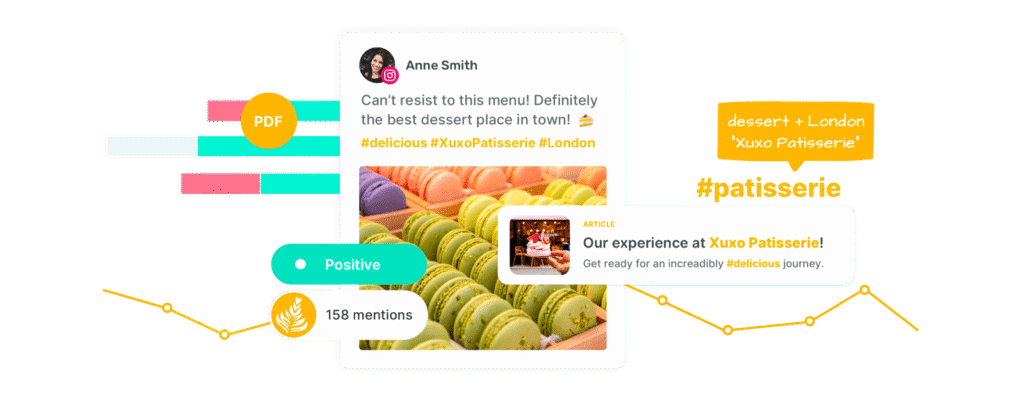
More AI capabilities for listening are already on the way, so choosing a tool that’s actively evolving—and easy for teams to use daily—is often more valuable than chasing the biggest feature list.
Step 4️⃣: Set your listening cadence
Not everything needs to be checked daily. Reputation does. Product feedback does. But category trends or competitive movements often work better on a weekly or monthly rhythm.
Think of cadence like tuning a radio — you adjust based on the noise level and how quickly things change. And with social listening AI summarising shifts for you, reviewing insights becomes more about pattern recognition than sorting through dashboards.
Step 5️⃣: Measure, optimise, and iterate
The final step is the one that turns AI social listening into something impactful. Look at what changed after you took action.
Did sentiment shift?
Did review complaints drop?
Did your content pick up in a new community?
Treat these cycles as experiments. The more you iterate, the more the system starts supporting not just reactive work but proactive decision-making.
The role of generative AI and LLMs in social listening
Generative AI has reshaped how organizations analyze text at scale, from survey responses to social media conversations.
Petter Törnberg’s guide on large language models (LLMs) in the social sciences describes them as a “highly versatile text analysis method” that can handle tasks ranging from text annotation and classification to sentiment analysis and critical discourse analysis in a single framework (arXiv). That same flexibility is exactly what modern social listening needs.
Older social listening stacks typically relied on classic NLP and machine learning.
So, they collected posts, detected topics, and ran sentiment analysis, often using separate models for each dimension. Recent work by Cantini, Cosentino, and Marozzo on multi-dimensional classification of social media data shows this pattern clearly. They classify user-generated posts along dimensions such as topic, sentiment, emotion, and reliability, then aggregate those structured outputs into reports.
In other words, LLMs added a layer that can sit over these signals and turn them into explanations and narratives.
🌟 One of the biggest shifts is how LLMs deal with messy, short social posts. Research points out that tweets and similar posts are short, noisy, and full of novel acronyms and abbreviations, and that conventional techniques “will not result in satisfactory results” in this setting. This is why LLMs are attractive in social listening: they are trained on huge, diverse corpora and can interpret slang, abbreviations, and fragmented sentences more robustly than many traditional models.
Summarization is where generative AI changes the game for social listening the most. According to the study, a pipeline where an open-source search engine retrieves posts from multi-platform crisis streams (Twitter, Reddit, Facebook, news) and GPT-3 turns them into factual summaries tailored to specific information needs.
Also, in a related TREC 2022 report, the same team demonstrates that this approach can generate atomic facts and summaries for daily event timelines, using social media data plus GPT-3, evaluated with ROUGE and BERTScore against human and official summaries. This is essentially social listening under extreme time pressure: huge volumes of posts condensed into a small set of decision-ready insights.
This kind of research underpins the idea that an LLM inside a social listening platform can behave like an embedded analyst. Instead of manually filtering dashboards, teams can ask questions like “Why did negative sentiment spike yesterday?” and let the model search, filter, and summarize relevant conversations. Törnberg’s work explicitly notes that LLMs can be used for sentiment analysis, classification, and more interpretive tasks such as discourse analysis, giving them the building blocks to answer these kinds of questions directly over text corpora (arXiv).
A second big shift is dual-AI architectures, where traditional models and LLMs work together. Cantini et al. propose exactly this pattern for social media: they first classify posts by topic, sentiment, emotion, and other dimensions using ready-to-use and fine-tuned classifiers, and then use an LLM (ChatGPT) to generate detailed reports that summarize posts with similar characteristics along those dimensions.
They show that these LLM-generated reports are both quantitatively and qualitatively better than reports produced by ChatGPT alone without the structured classification step.
Alharbi et al. follow a similar idea for analyzing sentiment trends. In AI-Driven Sentiment Trend Analysis: Enhancing Topic Modeling Interpretation with ChatGPT, they build a pipeline for social media data that includes data collection, preprocessing, sentiment analysis, social network graph construction, and topic modeling, then use ChatGPT to interpret and explain the topics and trends uncovered by the classical models (Springer).
This is a concrete research example of what many modern social listening tools aim for: one layer to crunch the numbers and another (the LLM) to explain what those numbers mean in language humans can act on.
Taken together, these studies show that the value of generative AI in social listening is not just automation or speed. LLMs let platforms:
- Handle noisy, short social posts more effectively than many conventional methods,
- Compress multi-platform, high-volume conversations into narrative summaries of what happened and why,
- And sit on top of traditional classifiers and topic models to translate structured metrics into clear recommendations and explanations.
In other words, AI-powered social listening becomes less about tracking mentions and more about understanding the story unfolding behind them.
Top AI social listening tools and platforms
The market is crowded, and almost every vendor claims to use AI. But a handful of platforms consistently stand out thanks to their coverage, language capabilities, and real intelligence under the hood.
1. Sociality.io
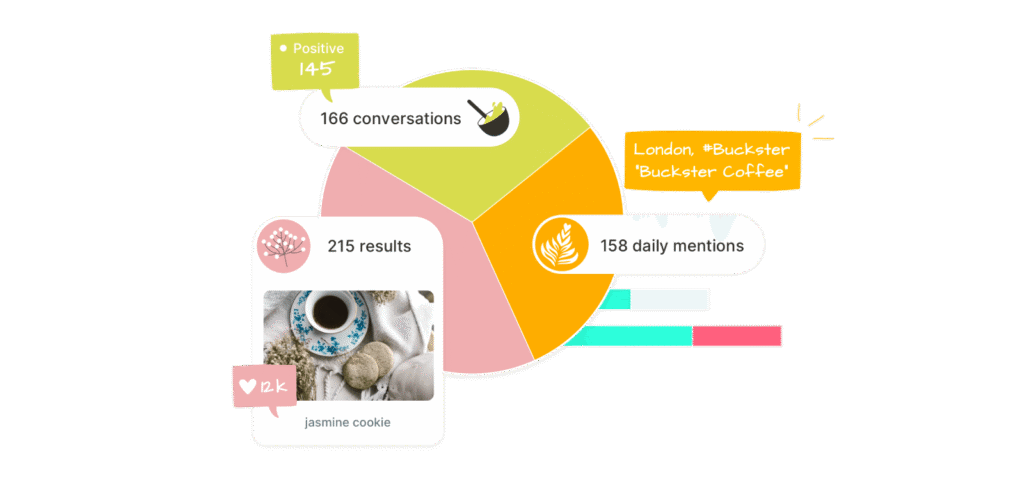
Pros
- AI-powered auto sentiment analysis available in the Listen module
- Unified sentiment engine across Listen + Engage
- Clean workflow, easy setup, strong customer support
- Clear roadmap for upcoming AI features in social listening
Cons / Limitations
- AI sentiment requires manual activation (permissions/settings)
- Language limitations—e.g., Arabic sentiment not yet supported
- Advanced AI features (beyond sentiment) are still in development.
2. Talkwalker (via Hootsuite integrations)
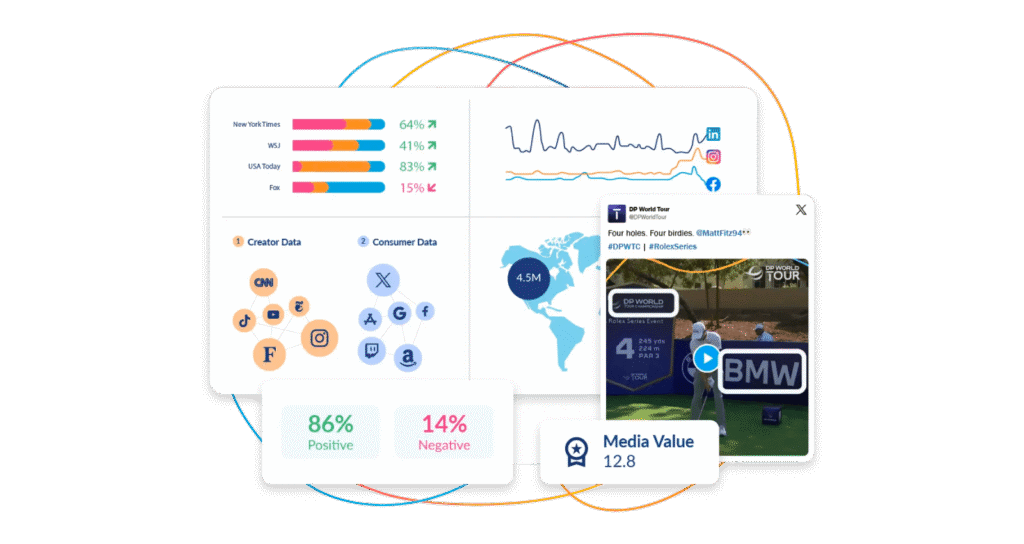
Pros
- Very broad global data coverage
- Strong trend detection and anomaly spotting
- Known for multilingual classification and entity recognition
Cons
- Enterprise-level pricing
- Can feel heavy for small teams
- Not all features are available directly inside Hootsuite.
3. Brand24

Pros
- Fast onboarding, simple UI, and lightweight setup
- Real-time monitoring is suitable for small and mid-size teams.
- Good value for cost
Cons
- Limited depth compared to enterprise tools
- AI insights are relatively basic.
- Smaller dataset coverage compared to bigger platforms
4. Digimind (Onclusive)

Pros
- Established in competitive and market intelligence
- Broad enterprise feature set
- Good support for multilingual environments
Cons
- More complex than lightweight tools
- The interface can feel dated.
- Most powerful modules sit behind enterprise pricing tiers.
5. Meltwater
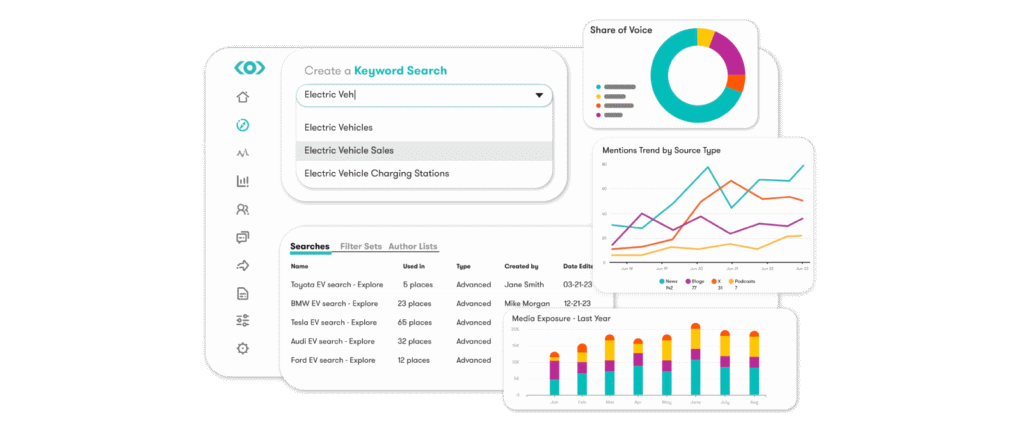
Pros
- Large global media + social dataset
- AI-driven entity tracking, alerts, and clustering
- Robust enterprise reporting
Cons
- Can be expensive
- Interface complexity for smaller teams
- Insights vary by region and language availability.
6. Sprinklr
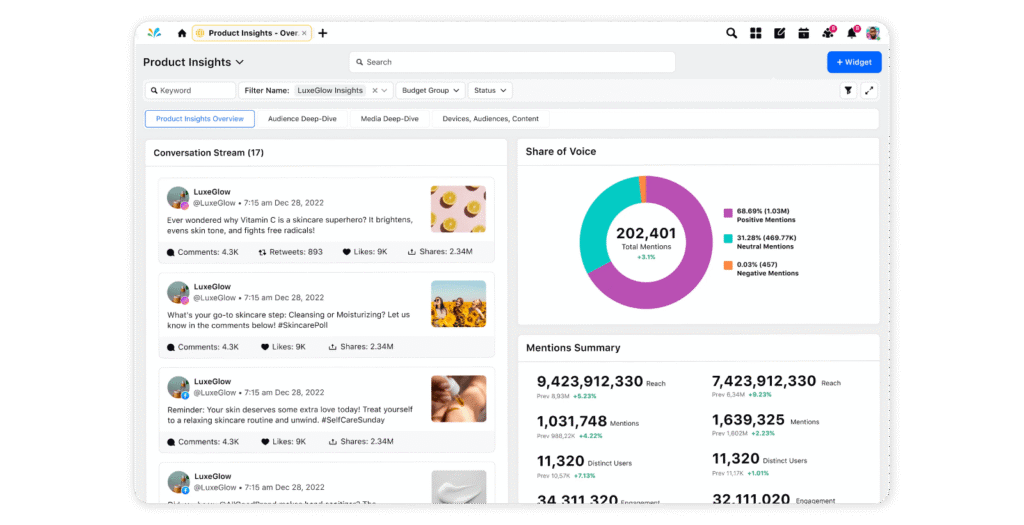
Pros
- End-to-end enterprise ecosystem (care, ads, listening, analytics)
- Strong AI enrichment for classification and routing
- Deep customisation for large organisations
Cons
- Overkill for smaller companies
- Steep learning curve
- Expensive licensing
How to choose the right AI social listening tool
At this point, the real question isn’t “Which tool has ‘AI’?”—nearly all vendors do.
The better questions are:
- Does the tool support your languages and regions?
- Does it match your team’s workflow—daily, weekly, or crisis mode?
- Does it offer real intelligence (summaries, explanations), or just dashboards?
- Is the AI actually useful, or just a checkbox on a sales page?
The best platform is the one that fits your bandwidth, your market, and your voice—not simply the one with the loudest AI claims.
🧙 Future trends: What’s next in AI and social listening?
Social listening is moving from reactive monitoring (“What are people saying right now?”) to predictive intelligence (“What is likely to happen next?”). A lot of this shift is driven by how fast AI research is evolving.
1. Multimodal listening (text + images + video)
People don’t just post text anymore; they react with memes, screenshots, product photos, and short-form videos. Research in multimodal sentiment analysis shows that combining text with images, audio, and video gives a more accurate view of people’s emotions than text-only models (Springer).
Recent work on visual-textual sentiment analysis and models that fuse tweet text with attached images (e.g., SentiModal) demonstrates that social media opinions can be better captured when visual and textual signals are processed together, especially for product-, brand-, and event-related posts (Springer).
2. From dashboards to prediction
A second big shift is from descriptive analytics (“Here’s what happened”) to predictive analytics (“Here’s what is likely to happen next if this trend continues”).
In finance and forecasting, multiple studies already show that social media sentiment can help predict market movements and volatility when combined with historical data and machine learning (Springer). While these works focus on stocks and demand forecasting, the pattern is transferable: social signals can be treated as early indicators of future behavior.
For brand and CX teams, this is likely to translate into:
- Models that flag a probable sentiment downturn before it’s obvious in standard dashboards.
- Alerts that say, in effect, “If this conversation pattern continues, you’ll likely see a spike in complaints/churn/support tickets in X days.”
3. Cross-channel intelligence instead of siloed views
Right now, many teams still treat TikTok, Reddit, X, Instagram, forums, and news as separate streams. Research and industry work are moving the other way: towards cross-source and cross-channel signals.
- In financial analytics, combining news + social media yields stronger, more resilient signals than either source alone, because institutional news and crowd reactions move on different timelines.
- Media and news studies (Pew, Reuters Institute) show that audiences use different platforms for different roles—for example, TikTok for news and culture among younger users and Reddit and X for niche or real-time discussions (Pew Research Center).
The implication for social listening: next-generation tools won’t just show you “what’s on TikTok” or “what’s on Reddit”—they’ll try to map how a meme, issue, or crisis travels across platforms and into news coverage, giving you one storyline across channels.
4. Deeper integration with CRM and CX stacks
Social listening is also becoming a standard data source for social CRM and customer experience.
Research on social CRM frameworks shows that integrating social signals with CRM data helps create a more unified customer view and supports better retention and campaign decisions. Industry guidance now explicitly recommends connecting social listening tools with CRM systems to trigger alerts, personalize outreach, and feed sentiment and topic data into journey orchestration.
In practice, this means:
- Social listening AI pushes segments, alerts, and insights directly into CRM and marketing tools.
- Product, support, and CX teams see social context inside the tools they already use, instead of logging into yet another dashboard.
5. The role of AI: more context, not just more noise
Across all of this, the role of AI in social listening is set to deepen, but the goal doesn’t really change. The direction of travel in the research is clear:
- Multimodal models to understand posts in text + image + video.
- Predictive models that use social signals as leading indicators of future outcomes.
- Cross-source approaches that combine social media, forums, and news for richer signals.
- Deeper CRM and CX integration so insights are actionable, not just visual.
So the future is less about flashy “AI features” and more about usable intelligence: helping brands understand people earlier, in more context, and react before they’re forced to.
AI-powered social listening helps you move from counting mentions to understanding the story behind every spike in sentiment. With 5.04 billion people — 62.3% of the global population — using social media, manual monitoring can’t keep up. This guide explains what AI social listening is, how machine learning, NLP, multimodal models, and LLMs turn noisy posts into clear insights, and how to build a practical strategy around them. You’ll also discover key tools (including Sociality.io), real research-backed use cases, and future trends like multimodal analysis, predictive alerts, and deeper integration with your CRM and CX stack.



